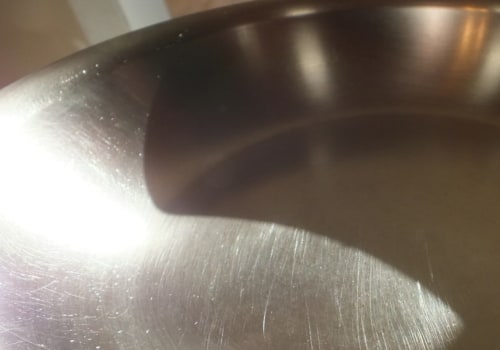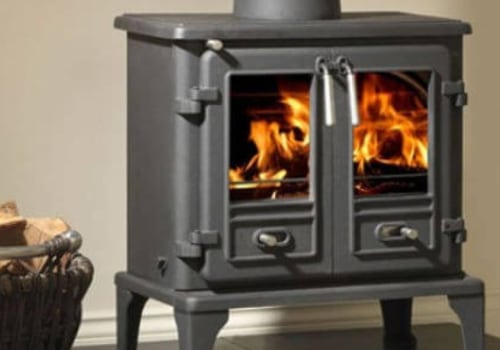Silicone utensils are a popular choice for many households due to their durability, non-toxicity, and high melting point. This material is chemically stable at extreme temperatures, does not leak materials into food, and does not release toxic odors or fumes during cooking. However, it should not be put in the dishwasher and is not biodegradable or recyclable. Silicone cookware is heat resistant, freezer and oven safe, but only up to 428 degrees Fahrenheit or 220 Celsius.
In addition, due to its bonded composition, silicon is non-toxic, non-biodegradable and non-recyclable. To ensure safety when using silicone kitchen utensils in the everyday kitchen, they must be made of 100% pure food grade silicone and labeled GRAS (generally considered safe) by the FDA. Although most people probably won't have a problem with silicone cookware, those with chemical sensitivity might want to stay away until more definitive research has been done. With all the negative press on Teflon and the metals leaking out of pots and pans, consumers are on the lookout for kitchen utensils that are easy to clean and do not pose health problems.
Silicone, a synthetic rubber made of bonded silicon (a natural element that abounds in sand and rock) and oxygen, is increasingly filling this niche. The flexible yet sturdy material, which has proven popular in cupcake pans, spatulas and other utensils, can go from freezer to oven (up to 428 degrees Fahrenheit), is non-stick and stain resistant and, unlike conventional cookware, comes in a range of bright and cheerful colors. But some wonder if there is a dark side to silicone cookware. Internet publications feature anecdotal reports of dyes or silicone oil oozing from overheated silicone cookware, as well as reports of lingering odors after repeated washing. In addition, the image of silicone can be forever affected by problems associated with silicone gel breast implants.
Some women with previous generations of these implants experienced capsular contracture, an abnormal immune system response to foreign materials. And while theories about the relationship of silicone implants to breast cancer have been debunked, the damage to silicone's reputation endures. It's sad to say, but since the use of silicone in cookware is quite new, there hasn't been much research into its safety for use with food. The Food and Drug Administration (FDA) determined that silicon dioxides, the building blocks of silicone cookware, were generally recognized as safe to use even in food-grade contexts. But the first silicone kitchen utensils (silicone spatulas) didn't begin to appear on store shelves until a decade later, and the FDA has not conducted any follow-up studies to determine if silicone can leak from cookware and potentially contaminate food. For its part, Canada's health agency Health Canada argues that food-grade silicone does not react with food or beverages or produce any hazardous smoke and is safe to use up to recommended temperatures.
Consumer Advocate Debra Lynn Dadd who stays away from Teflon due to health concerns is optimistic about silicone cookware after investigating potential toxicity. He adds that silicone “is not toxic to aquatic or soil organisms; it is not a hazardous waste; and although it is not biodegradable it can be recycled after a lifetime of use”.So while most of us probably don't have a problem with silicone cookware those with chemical sensitivity will want to stay away until more definitive research has been done. Meanwhile cast iron and anodized aluminum cookware remains the best options for those who worry about harmful elements leaking into their cooked food. Because of their adaptability and exciting colors, silicone utensils are becoming popular these days. Even so, silicone is a synthetic substance so you may wonder: are silicone kitchen utensils safe? Silicone differs from silicon (Si), which is commonly used as a semiconductor in the manufacture of devices and other parts of electronic equipment.
They are very different from each other; however silicone contains silicon atoms with both metal and non-metal properties. Advantages of Silicone Kitchen Utensils Silicone kitchen utensils have features that have advantages over their counterparts such as metal plastic rubber or wood. Let's consider its features to find out if it's worth using. Food-grade silicone should be 100% silicone but what worries a lot of people is that there are a lot of low-quality silicone utensils on the market today that add plastic fillers. Therefore everyone should be careful when buying silicone kitchen utensils. Remember pure silicone is inert and will not remove toxic chemicals while cooking.
As an Amazon partner we win with qualifying purchases. I was trying to figure out if buying silicone molds for making dog treats (in the freezer) would be a safe idea. HB Silicone is a full-service silicone manufacturer capable of taking your silicone product from concept to large-scale production. You mentioned that curing silicone baking utensils in the oven at 220 degrees is but you didn't mention if it's 220F or C. Silicone muffin molds and cake molds seemed like a dream but even now I'm still not convinced of their safety. In one study very limited migration of these compounds was observed from silicone baking trays or from silicone teats of bottles (R). With all the negative press on Teflon and metals leaking out of pots and pans consumers are looking for cookware that is easy to clean and does not pose health problems. Since there is so little safety data on the use of silicone bakeware and the availability of other types of cookware that are non-toxic environmentally friendly and safe I would recommend exploring other options before investing in any type of bakeware made from this material.



